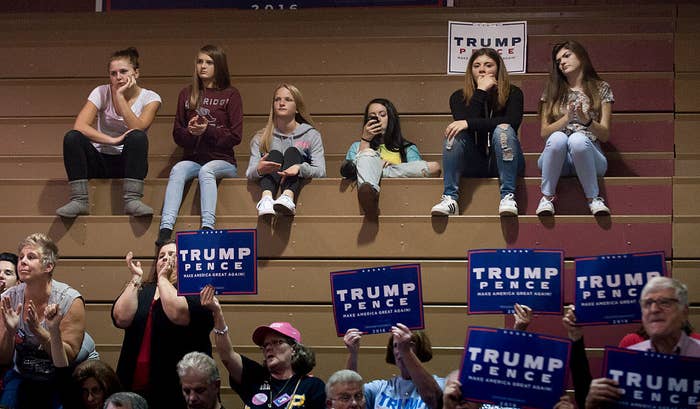
President-elect Donald Trump has said he plans to make dramatic changes to the student loan system, handing control of federal loans back to big banks, and making it more difficult for students in degree programs, like liberal arts, to borrow money.
Here are a few changes borrowers could be looking at.
Income-based repayment programs are probably safe for now.
In the short term, the way borrowers pay back their loans isn't likely to change much, if at all, under Trump. In October, he proposed a student loan repayment plan that looked surprisingly similar to the one already put in place by President Obama. It would allow borrowers to pay back their federal loans as a portion of their income — though at a slightly higher percentage, and for a shorter period of time, than the current plan calls for.
Trump's plan would require borrowers to make repayments equal to 12.5% of their income, for 15 years, while the current system requires payments of 10% for 20 years. Some experts say Trump's system would benefit borrowers with high loan balances, like graduate students, and do very little for low-income borrowers.
But several other government loan forgiveness programs aren't guaranteed to stick around under the new administration. Trump has indicated he would consider getting rid of public service loan forgiveness, which wipes out the loans of those who work in public-sector jobs after 10 years of loan repayment.
And many have speculated that the Obama administration's push to secure loan forgiveness for defrauded for-profit college students is likely to grind to a halt under a Trump administration. The efforts, which have required large amounts of man power and effort on the administration's part, are unlikely to be prioritized by Trump's team, many believe.
Trump could hand federal student loans over to big banks.
There are indications that the Trump administration could make moves to drastically alter the student loan landscape. Sam Clovis, the campaign's co-chair, said in a May interview with Inside Higher Education that the Trump administration would look to make student lending "marketplace driven," taking the role of creating student loans out of the hands of the federal government and giving it to banks, allowing them to essentially act as a middleman in student lending.
Such a change could be bad news for low-income students, because the federal government offers student loans with much lower interest rates than banks typically would. Privatizing student loans could make them substantially more expensive for borrowers. Alternately, in order to keep down costs for students, taxpayers could end up subsidizing banks with fees and guaranteed interest rates.
Privatization probably wouldn't do much for borrowers, but it would be great for banks and private lenders.
Student loan giant Navient has been one of the best performing companies in the S&P 500 index since Trump's victory, with its stock rising 26% as the prospect of the privatization of student lending tantalizes investors.
Before 2010, when private lenders had a role in creating federal loans, Navient — then part of Sallie Mae — was the biggest player. But when the government kicked private lenders out of the federal loan business, Navient was left floundering, servicing an ever-shrinking portfolio of old loans and hoping for policy changes like the one Trump's administration might embrace.
Trump could make it harder to borrow money if you're studying the liberal arts.
Clovis also floated an even more radical idea: that it should be more difficult, or more costly, to borrow money from the federal government based on what you choose to study.
The Trump administration would accomplish this by forcing colleges to share in some of the "risk" associated with their students' loans, meaning they'll bear a financial penalty if students can't pay them back. "Risk-sharing," Clovis said, would be passed along to students, meaning that colleges and banks could charge higher interest rates to students whose degrees were less likely to result in lucrative employment prospects.
"If you are going to study 16th-century French art, more power to you. I support the arts," Clovis told Inside Higher Ed. "But you are not going to get a job."
Trump said he would drive down the cost of college by easing regulations on schools.
Part of Trump's bid to deal with the student debt crisis, he said in his October speech, is to cut back on federal regulations, which some conservatives have said create extra expenses that are partially responsible for rising tuition.
The slashing of regulations could apply especially to for-profit colleges, which have faced intense regulatory pressure under President Obama, including a set of strict rules that would cut off federal student aid to programs where too many students did not make enough money to pay back their loans.
The Trump transition team did not respond to a request for comment.
